Belonging to the Asteraceae family, Sweet Joe Pye Weed, also known as Gravel Weed, Indian Sage, Joe-Pye Weed, or Marsh Milkweed, is a hardy perennial that adds charm and life to any garden. Native to Southeast Canada, North Central, and Eastern United States, this plant is cherished for its delicate pale pink to purple blooms that grace gardens from midsummer through fall.
Known for its ability to attract butterflies with its sweet nectar, Joe Pye Weed is an excellent choice for wildlife enthusiasts. Its beauty and ecological benefits make it a versatile and rewarding addition to backyard landscapes.
| Common name | Sweet Joe Pye Weed, Gravel Weed, Indian Sage, Joe-Pye weed, Marsh Milkweed |
| Botanical name | Eutrochium purpureum |
| Family | Asteraceae |
| Species | purpureum |
| Origin | Southeast Canada, North Central and Eastern United States |
| Life cycle | Perennial |
| Plant type | Herbaceous Perennial |
| Hardiness zone | 4, 5, 6, 7, 8, 9 |
| Sunlight | Full Sun |
| Maintenance | Low |
| Soil condition | Clay |
| Soil ph | Acid |
| Drainage | Well-Drained |
| Spacing | 3 ft. – 6 ft. |
| Harvest time | Fall |
| Flowering period | Fall |
| Height | 5 ft. – 7 ft. |
| Flower color | Pink |
| Leaf color | Green |
| Stem color | Green |
| Fruit type | Achene |
| Flower benefit | Fragrant |
| Garden style | Butterfly Garden |
| Uses | Coastal |
I. Appearance and Characteristics
Eutrochium purpureum, commonly known as purple Joe-Pye weed or sweet scented joe pye weed, is an herbaceous perennial plant in the family Asteraceae. It is native to eastern and central North America, from Ontario east to New Hampshire and south as far as Florida, Louisiana, and Oklahoma.
Eutrochium purpureum is a clump-forming herb that grows to 1.5–2.4 meters (4.9–7.9 ft) tall and about 1.2 meters (3.9 feet) wide. Plants are found in full sun to part shade in mesic to wet soils. Stems are upright, thick, round, and purple, with whorls of leaves at each node. As the plant begins to bloom the stems often bend downward under the weight of the flowers.
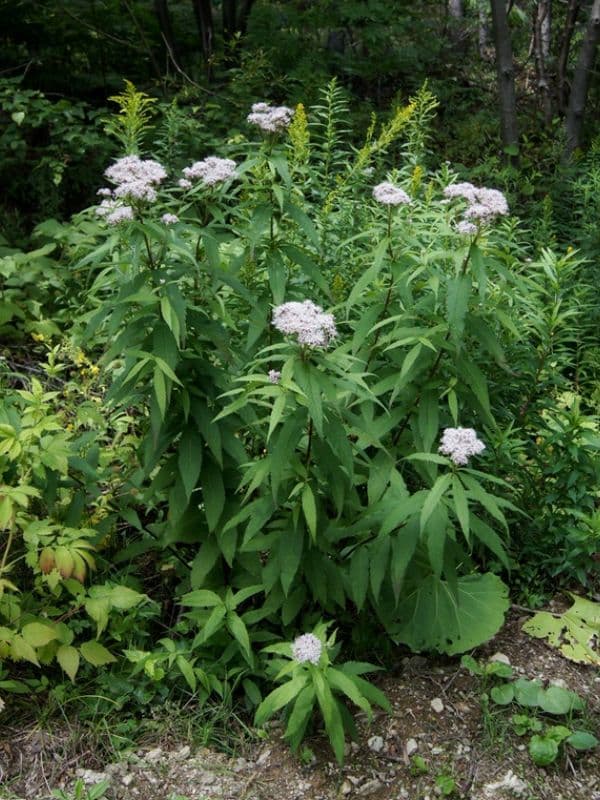
The leaves grow to 30 cm (12 in) long and have a somewhat wrinkled texture. The purplish flowers are produced in large loose, convex shaped compound corymbiform arrays. Plants bloom mid to late summer and attract much activity from insects that feed on the nectar produced by the flowers.
Many species of butterflies, moths, bees, and flies visit the flowers.
It is larval host to the eupatorium borer moth (Carmenta bassiformis), the red groundling moth (Perigea xanthioides), the ruby tiger moth (Phragmatobia fuliginosa), and the three-lined flower moth (Schinia trifascia).
The larvae of Calycomyza flavinotum, a leaf miner fly, create blotch-shaped mines on the leaves.
II. How to Grow and Care
Sunlight and Soil
Joe-pye weeds in the garden prefer full sun to partial shade. They also like to be kept somewhat moist in average to rich soil. Growing Joe-pye weed will even tolerate wet soil conditions but not overly dry sites. Therefore, in areas with hot, dry summers, plant these ornamental beauties in partially shaded locales.
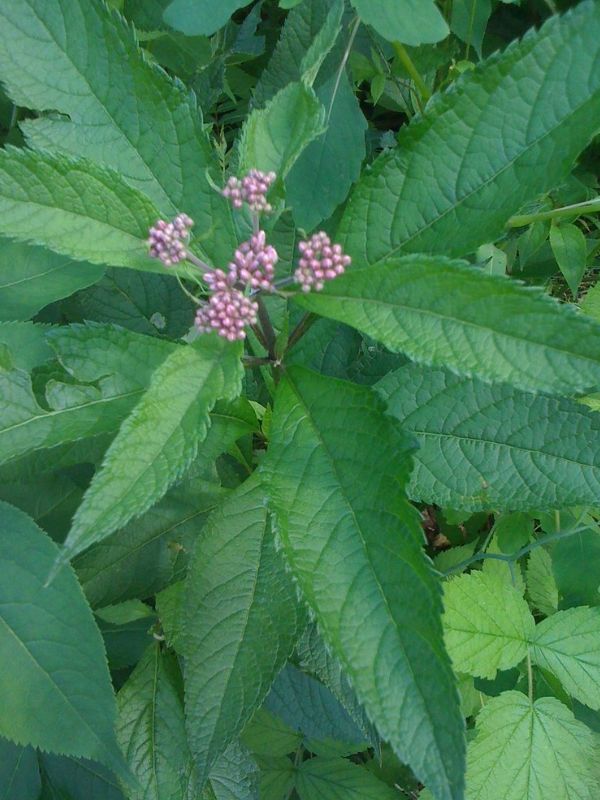
Watering
Native to moist environments in North America, sweet Joe-Pye weed thrives with consistent moisture akin to its natural habitat. This species exhibits a preference for wetter conditions and is moderately drought-tolerant. For optimal health, it requires watering every week. As an herbaceous perennial, sweet Joe-Pye weed often favors outdoor cultivation where it can benefit from natural rainfall patterns. Its water needs are particularly heightened during the growing season, when ensuring adequate moisture is crucial for its vigorous growth and lush flowering.
Fertilizing
To support sweet Joe-Pye weed’s growth, use balanced nutrition fertilizers annually in spring. This promotes vigorous growth and plentiful blooms. Apply as per product label, sparingly to avoid over-fertilization. During active growth, additional feedings may enhance performance. Always water sweet Joe-Pye weed thoroughly after applying fertilizer to aid nutrient absorption and prevent root burn. Adjust applications based on sweet Joe-Pye weed’s response and seasonal changes, reducing in fall as sweet Joe-Pye weed prepares for dormancy.
Propagation
Older plants can be divided and replanted in the early spring as new growth starts or fall. When the center dies out of Joe-pye weeds in the garden, then it’s time for division. You need to dig up the entire clump, cutting away and discarding the dead center material.
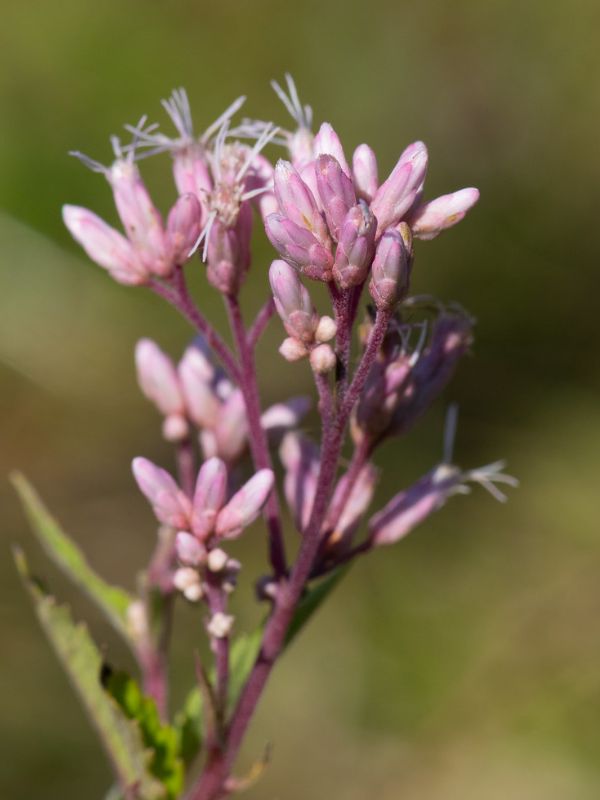
You can then replant the divided clumps. Plants die back to the ground in late fall. This dead growth can be cut back or left over winter and cut in spring. Although it’s not the most recommended form of propagation, Joe-pye weed plants can be grown from seeds. They require stratification for about ten days at 40 degrees F.
Do not cover the seeds as they require light for germination, which on average takes about two to three weeks. Root cuttings can also be taken in the spring.
Transplanting
Transplanting sweet Joe-Pye weed thrives best in spring or early fall (S3-S4), as it allows the plant ample time to establish roots before stressful hot or cold weather hits. Choose a location with full sun to partial shade, and well-drained loamy soil. Remember to water thoroughly after transplanting for optimal growth.
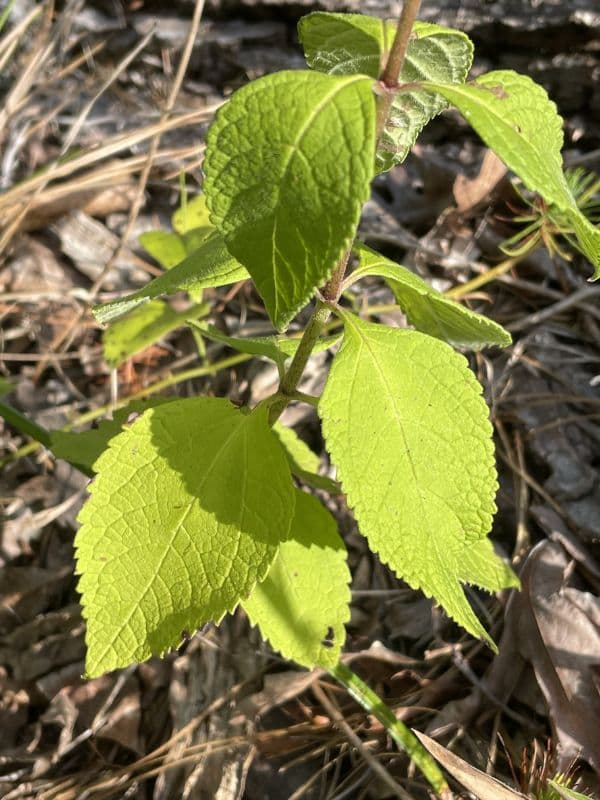
Repotting
Ideal for repotting every 2-3 years, sweet Joe-Pye weed is a tall, bushy perennial. Best repotted in early spring, accommodating its summer growth spurt. Choose large, deep pots to support its robust root system. Provide ample water and partial shade post-repotting for recovery. Ensure well-draining soil to maintain health and vigor.
III. Uses and Benefits
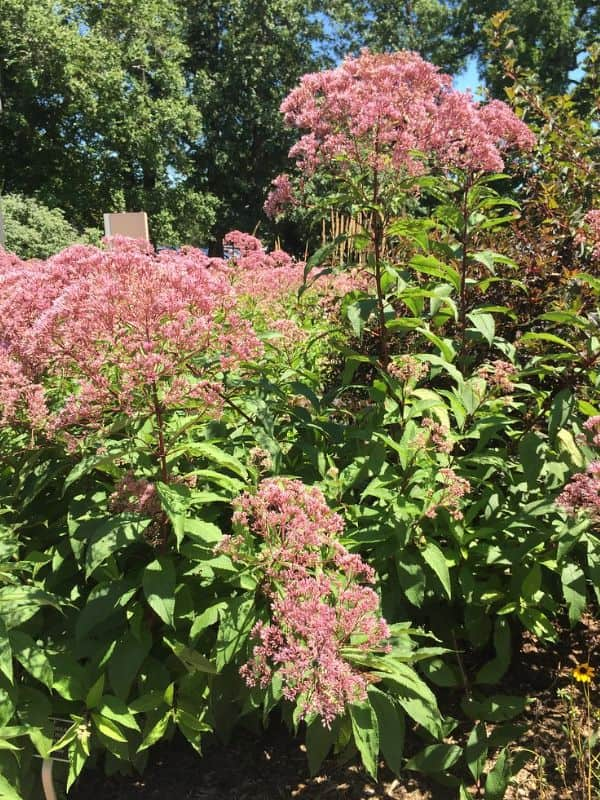
The honey produced by the flowers of sweet Joe-Pye weed will bring butterflies and bees to your garden in the springtime, and the seed heads will draw in birds during the winter, making it a great choice for wildlife gardens almost year-round. It can also be used as a lovely border in sunny wild cottage gardens or sandy coastal gardens.
Find Where to Buy the Best Sweet Joe Pye Weed (Eutrochium purpureum)


















Leave a Reply